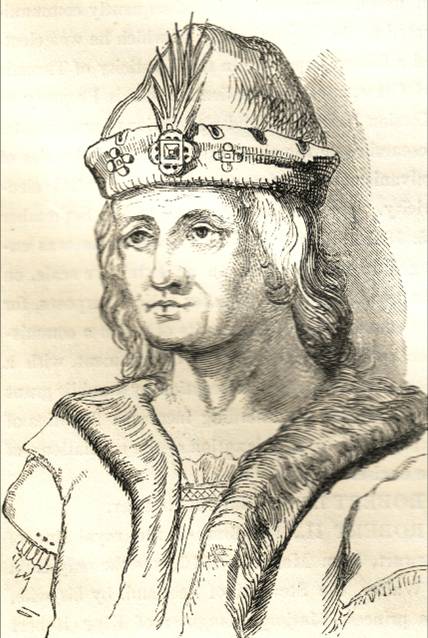|
ROBERT I. See
BRUCE, ROBERT.
ROBERT II., the first of the royal line of Stewart, born March 2,
1316, was the only child of Walter, the Steward of Scotland, by his
wife, the princess Marjory, daughter of King Robert the Bruce. In
accordance with the act of settlement of the crown, he succeeded to the
throne on the death of David II., February 22, 1371, being at that time
55 years of age, and in the following month he was crowned at Scone by
the archbishop of St. Andrews. William, first earl of Douglas, at first
opposed his accession, and urged a right to the throne as representative
of the families of Comyn and Baliol, but, finding all the nobles adverse
to his claim, he prudently withdrew his pretensions. For some years
immediately following Robertís succession, Scotland was visited by a
grievous scarcity, and for the space of two years the plague raged with
great violence. For the principal events of his reign, none of which
were of great importance, reference may be made to the article Albany,
first duke of in this work. The year before his fatherís death, the
duke, then earl of Fife and Menteith, was appointed governor of the
kingdom. King Robert, now relieved of the cares of sovereignty, retired
from Dunfermline, where the court was then held, to his castle of
Dundonald, in Kyle, where he died, 19th April 1390, in his 75th year,
and the 19th year of his reign. The following woodcut is taken from a
portrait of Robert II. in Pinkertonís Scottish Gallery:

[woodcut of King Robert II]
He was twice married, first to Elizabeth,
daughter of Sir Alexander Mure of Rowallan, by whom he had four sons and
six daughters, all born before marriage; and, secondly, to Euphemia, a
daughter of the earl of Ross, by whom he had two sons and four
daughters. Besides these, he had a numerous illegitimate progeny by
various women. He was popularly designated ďBlear-Eye,Ē from the
breaking out of an inflammation in his eyelids, which deformed his
originally handsome countenance. According to a tradition, which Lord
Hailes has been at pains to refute, his mother was killed by being
thrown from her horse when pregnant with him; and, being cut out of her
side, by the Caesarean operation, he received a wound in one of his eyes
from the surgeonís knife, which left there an unseemly mark ever
afterwards.
ROBERT III., eldest son of Robert II., by Elizabeth Mure, was
born about 1340, and, during his fatherís reign, bore the title of earl
of Carrick. His Christian name was John, but on succeeding to the
throne, he changed it to Robert, to which the Scots were partial, and
considered John, after John Baliol and King John of England, an unlucky
name for a king. He married Annabella, a daughter of Sir John Drummond
of Stobhall, by whom he had several children. During the greater part of
his reign, the kingdom was disturbed by the feuds and dissensions of a
rude and turbulent nobility. In his youth, the king had received a kick
from a horse, which rendered him lame, and as he was of an indolent and
pacific disposition, but amiable and intelligent withal, the
administration of affairs devolved upon his brother, the earl of Fife,
created by him duke of Albany, with the title of guardian of the king
and kingdom. Robertís eldest son, the duke of Rothesay, was by a strong
party of the nobility considered to have a better right to that post
than the kingís brother, and in 1398, Albany was compelled to resign his
office. When Henry IV. of England invaded Scotland in 1400, the
government was in the hands of the heir apparent. But the licentious
habits of that ill-fated prince led his father, in 1402, to give Albany
an order to arrest him. He was imprisoned in the castle of Falkland, and
there he died, in his 29th year.

[portrait of King Robert III]
After Rothesayís death, Albany was allowed
by the feeble monarch to wield at will the reins of government; until,
roused to a strong suspicion of his brotherís ambitious designs, he
resolved to send his only surviving son, James, then in his 11th hear,
to France for safety. On the passage the young prince was seized by the
English, March 30, 1405, and detained a prisoner in the Tower of London,
an event which is said to have hastened the kingís death at Rothesay
castle, April 4, 1406. |

